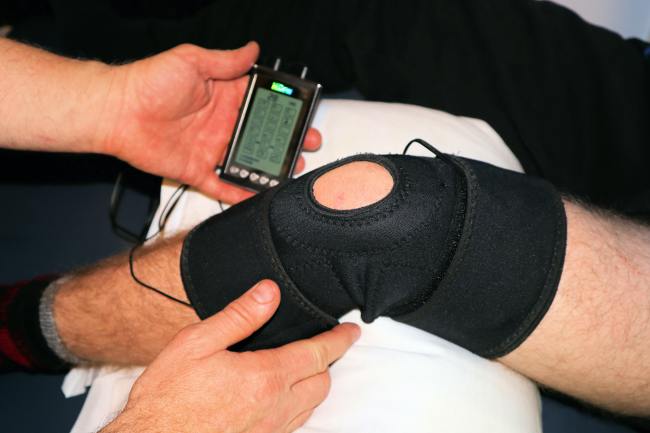
Value-based healthcare, you might have read, is the future. Payers understand this. Patients—those who know about VBC—appreciate it. But you know which group is the least enamored of VBC? Providers.
A value-based future makes them uncertain. Understandably. Historically, providers occupied the center ground. Hospitals measured value based on pre-ordered tests, procedures, and medications, but put scant emphasis on patient outcomes. This gave providers a sense of autonomy and mastery—two of the three intrinsic elements necessary to motivate professionals of all stripes. By putting the emphasis on outcomes, providers find themselves being managed by outside forces, if not nudged to the corner of the stage. A new, and not necessarily comfortable, role for them in the drama of healthcare.
How will the shift to value alter the medical profession? Will it make things better or worse for them? It is something to fear or embrace?
And quite a drama it is. At present, over $3 trillion is spent annually on healthcare in the U.S. Value-based care promises to be more cost-efficient and to provide better, more holistic, longitudinal care. Question is: How will this change life for providers? How will the shift to value alter the medical profession? Will it make things better or worse for them? It is something to fear or embrace?
At Continuum, we know that the path toward understanding requires going out and engaging the people directly affected by an innovation. So, to gain a provider’s perspective on VBC, we met up with Dr. Akshay Desai, MD, MPH, Cardiologist, and Associate Director at Boston’s Brigham and Women's Hospital, and Kimberly Parks, DO, Cardiologist, Director at VA Boston Healthcare and Medical Director of Lifestyle Medical and Cardiovascular Associates, P.C.
In our conversations with Desai and Parks, we heard a tension between the need for providers to maintain their independence, and the fact that a systemic vision is necessary for VBC to scale across institutions. There are many uncertainties about the future, but one thing seems certain: providers must, absolutely must, have a say in the process of redesigning care.
Spelling Out Outcomes
The challenge is, in many ways, a matter of metrics. “Traditional models focused more on process metrics,” says Desai. “However, these metrics haven’t necessarily resulted in any efficient containment of cost or improved outcomes. I believe that value lies in measuring outcomes over cost.”
In general, healthcare lacks a step-wise approach to implementing value-based programs. VBC can easily seem overwhelming for hospital systems. A key would be to start small, including all the stakeholders in a particular disease area. Have a modest group implement a values-based approach to measuring and improve outcomes—and then scale this process and its learning across other areas. “An approach to designing a focused team with representation from all stakeholders will need to come together to achieve desired outcomes,” Desai says. “This change is going to be a large undertaking for providers, payer and care teams.”
It’s not just about defining a strategy that will measure outcomes. It’s more about finding the right diseases to focus on—and implementing common strategies across integrated care systems and infrastructure.
It’s not just about defining a strategy that will measure outcomes. It’s more about finding the right diseases to focus on—and implementing common strategies across integrated care systems and infrastructure. Operating in a strategic way across the continuum of care will certainly help improve outcomes and their measurement. But preparing for a value-based solution will also require a look at how care extends beyond the hospital. For this, the most important thing is to identify a population that needs health services more than others. Parks suggests that the private and public sectors can help improve patient outcomes. For instance, McDonald’s could focus on providing healthy food, and the government could tightly regulate the sugar and salt portions in processed food. “Eighty per cent of the [health] cases can be prevented. We are focusing on managing disease and not health and wellness,” says Parks.
Going forward, holistic programs that track, measure, and prove clinical outcomes at low cost, by understanding value and by defining prevention strategies, will lead the way.
“There are some organizations that are interested in creating tools for hospitals to use to implement and audit their outcomes,” Desai says, adding: “Who is ultimately going to do that is unknown, but there is an increasing need for a coordinated approach that is supported by some third party.”
Providers Get Ready
The reality most physicians acknowledge: The changes for VBC are coming, but care teams are not as prepared as they should be for their arrival. Providers are “not enthusiastic” about the changes, says Desai. “Most providers focus on offering care they can control in a clinic—but what happens when the patient leaves my clinic is largely out of my control and I don’t even know whether they take the medication as prescribed? If the result isn’t as desired, then the provider gets penalized for things beyond their control.”
“If physicians are incentivized to come up with some innovation to manage the outcomes, then there is a higher chance of it to be successful. I like the idea of throwing it back at the providers, have providers figure out a solution.”
VBC ultimately depends on what and who decides on the outcomes to be measured in the value-based system. Parks suggests that the current scenario could be seriously improved if the proper incentives were attached to it. “Money is a big motivator,” she adds. “If physicians are incentivized to come up with some innovation to manage the outcomes, then there is a higher chance of it to be successful. I like the idea of throwing it back at the providers, have providers figure out a solution.”
Value is not only limited to measuring the right outcome, physicians see value in work satisfaction. Says Parks: “Value [to providers] has always been linked directly to work satisfaction, which one also got from fostering relationship with patients. But, it is now changing.”
Patients are less satisfied with their care—especially millennials—who are turning to other information sources due to lack of physician accessibility. Programs should also include strategies to foster and nurture the physician-patient relationships to better provide value to the providers.
The Tech-Enabled Provider
Over the years, there has been a significant shift in increased regulation and the need for medical records. Parks says that value used to be a function of time, process, and the ability to provide quality care. “This was because of face-to-face involvement between the practitioner and the patient. However, these days about 80% of patient’s interaction is conducted electronically. So, value to physicians must now be focused on minimizing the electronic burden. The systems need to work make physicians more accessible to their patients.”
“There is more than enough data out there. And, this is where technology can help us capture it and give direct feedback to patients without actually having to engage with the doctors.”
For an effective value-based system to work in the digital world, we need to increase physician-patient engagement, while ensuring the electronic processes are increasing efficiency, not negating it. “There is more than enough data out there. And, this is where technology can help us capture it and give direct feedback to patients without actually having to engage with the doctors,” says Parks.
She sees the role of a doctor evolving. In the future, providers will be more like coaches providing the resources patients need. This will allow physicians to enable compliance and improve health management for better patient outcomes. “Technology needs to present data that is actionable,” Parks says. “For example, we should know a patient has been admitted five times before, and along with it we should have instant access to their weight graph and other details, so that we are not hunting around for it.”
Technology is capable of identifying patterns of activity, food purchases, lifestyle, and other health-related issues that factor into providing the best care and outcomes. It should also help predict or recommend the type of interventions that would be most effective for a particular condition. The advent of artificial intelligence and data analytics will surely help pick out the signal from the noise and provide immediate response/feedback to the end customer. Programs that provide instant gratification make people want to stay on track and achieve the desired results.
Smiling at the Value-Based Future
As providers love checklists, it seems smart to list suggestions—from our conversations with Desai and Parks—that could help providers make an easier transition to VBC: choose the right metrics, develop systems to track performance, build models to implement and routinely audit outcomes for value-based care. Any value-based framework should be robust and autonomous enough be easily exported from one institution to another. And, of course, the definition of outcome needs to include treatment beyond the hospital, to ensure a holistic view of patients and the recovery process to determine true value.
It’s critical that providers are bought into the care redesign process.
It’s critical that providers are bought into the care redesign process. There’s an increasing need for a coordinated approach across care teams, for which the providers may need to play the quarterback. And finally, in today’s world the advancement in healthcare tech must be leveraged wherever appropriate and whenever it provides tangible value.
If these conditions are met, providers might actually smile at a value-based future.
Image of Dr. Desai (c) Brigham and Women’s Hopsital
Image provided by Dr. Parks.





